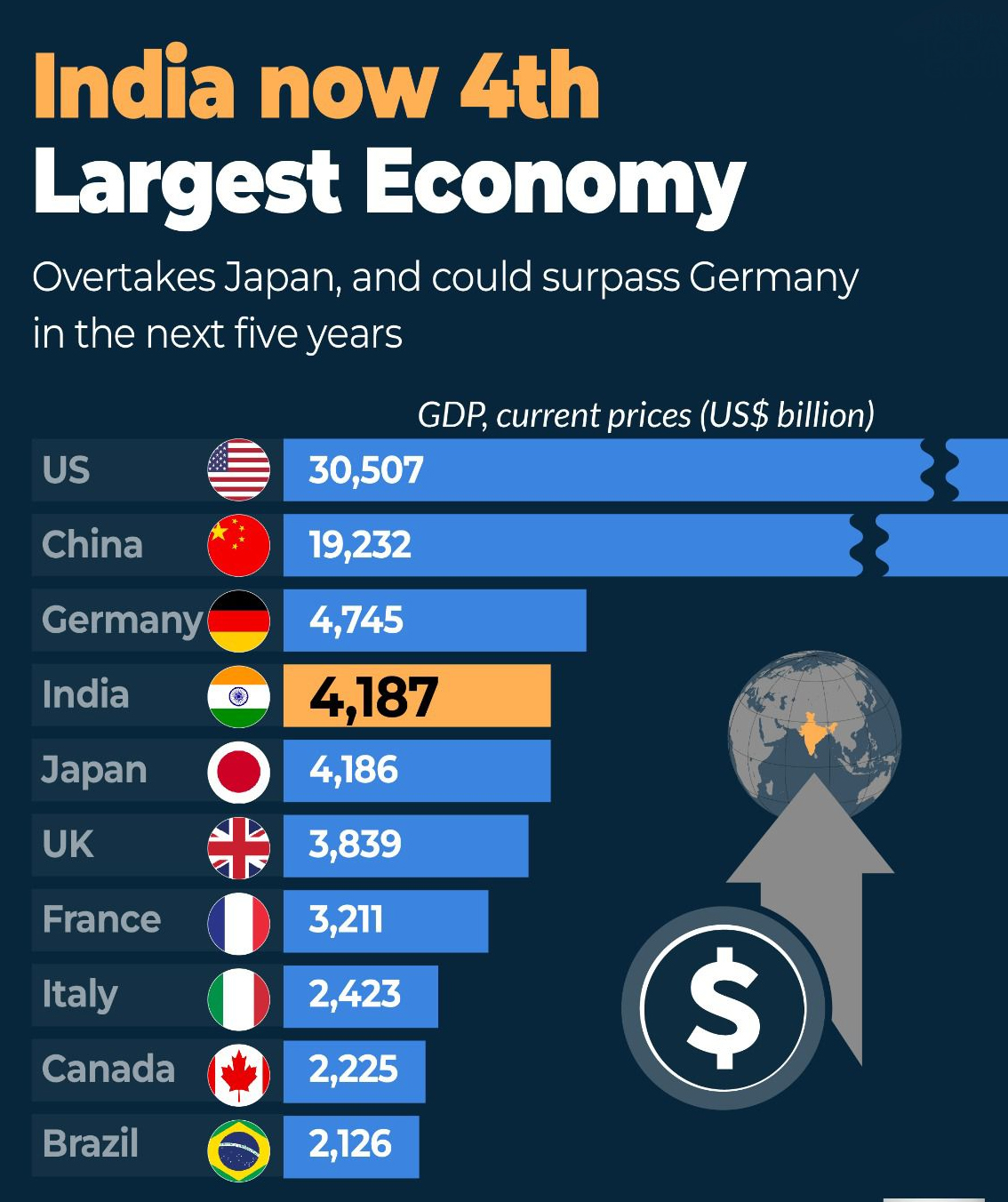Context:
India has officially surpassed Japan to become the world's fourth-largest economy, with its nominal Gross Domestic Product (GDP) crossing the USD 4 trillion mark. The announcement was made by NITI Aayog CEO B.V.R. Subrahmanyam during a press briefing following the 10th NITI Aayog Governing Council Meeting on the theme "Viksit Rajya for Viksit Bharat 2047".
Key Highlights:
- India’s Nominal GDP is projected to reach USD 4.187 trillion in FY26 (2025), slightly ahead of Japan’s estimated GDP of the same figure, according to the International Monetary Fund (IMF).
- Per Capita Income in India has nearly doubled over the past decade—from USD 1,438 in 2013-14 to USD 2,880 in 2025.
- Global Economic Ranking: India now ranks fourth globally, behind only the United States, China, and Germany.
- Growth Forecast: The Indian economy is expected to grow at 6.2% in FY26, driven primarily by rising private consumption, especially in rural areas, despite a backdrop of global trade tensions.
About Vision 2047: Viksit Bharat
India's long-term economic vision is captured in the NITI Aayog's approach paper titled "Viksit Rajya For Viksit Bharat @ 2047", which lays out an ambitious goal for the nation: to become a high-income country and achieve a USD 30 trillion economy by 2047, the centenary of India’s independence.
The Six Strategic Pillars:
1. Macro-Economic Goals and Strategy
2. Empowered Citizens
3. A Thriving and Sustainable Economy
4. Technology and Innovation Leadership
5. A Global Leader (Vishwa Bandhu)
6. Enabling Factors – Governance, Security, and Justice Delivery
The framework focuses on transforming India into a nation marked by innovation, equitable growth, robust governance, and global leadership.
What are high-income countries? The World Bank defines high-income countries as those whose annual per capita income is more than USD 14,005 (2024- 25). India has the potential and aims to be a high-income country by 2047.
Path to High-Income Status:
India's journey to becoming a high-income country will require sustained economic growth, driven by factors such as:
- Private Consumption: Increasing private consumption, particularly in rural areas, will play a crucial role in driving economic growth.
- Innovation and Technology: Embracing technology and innovation will be essential for India to stay competitive and achieve rapid growth.
- Sustainable Development: India's growth will need to be sustainable, with a focus on environmental protection and social inclusivity.
Conclusion:
India's rise to the fourth-largest economy in the world reflects not only the scale of its economic transformation over the last decade but also its potential for future leadership on the global stage. With strategic reforms, inclusive development, and a clear roadmap to 2047, India is poised to emerge as a leading economic power, shaping the 21st-century global order.







